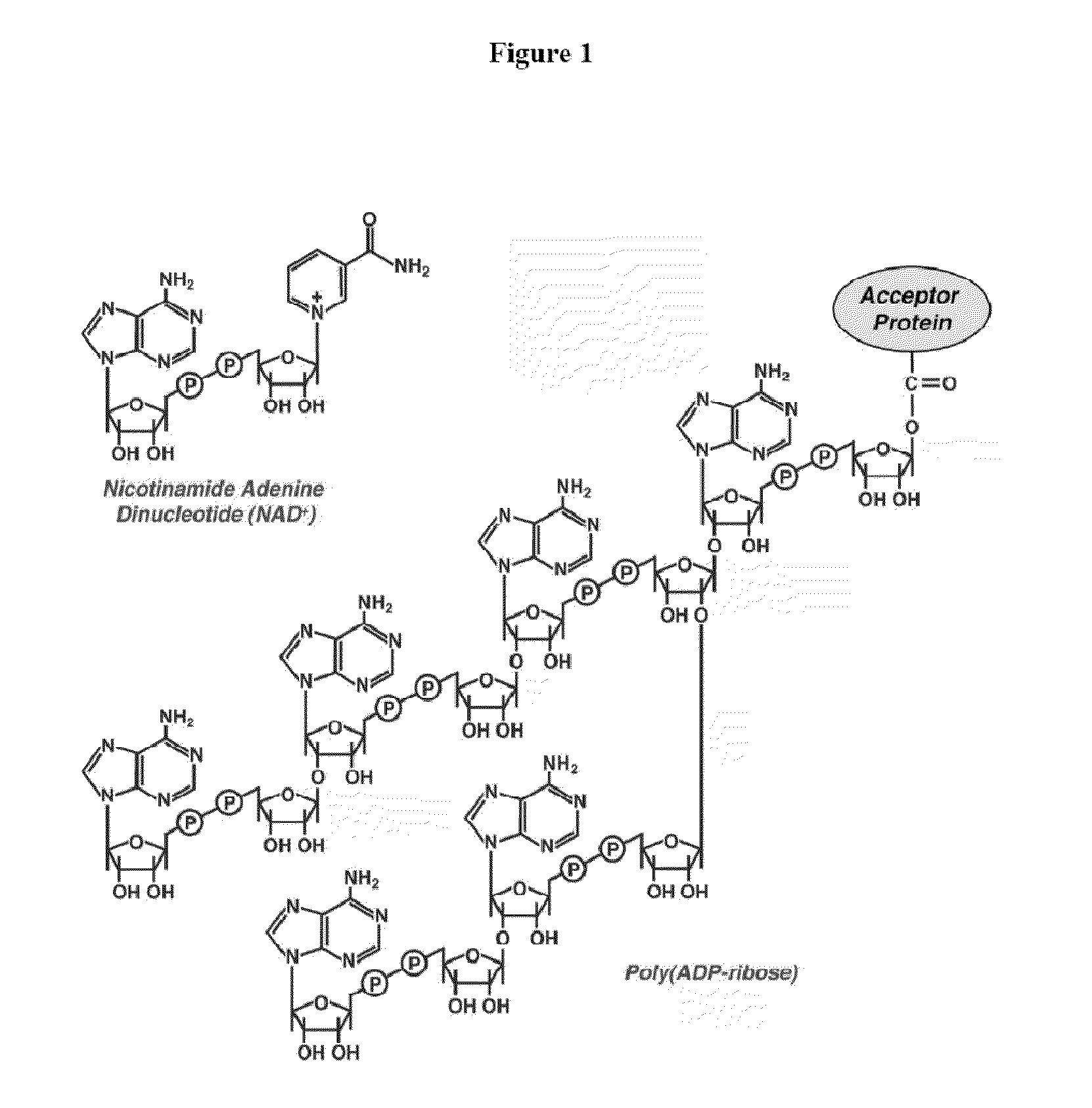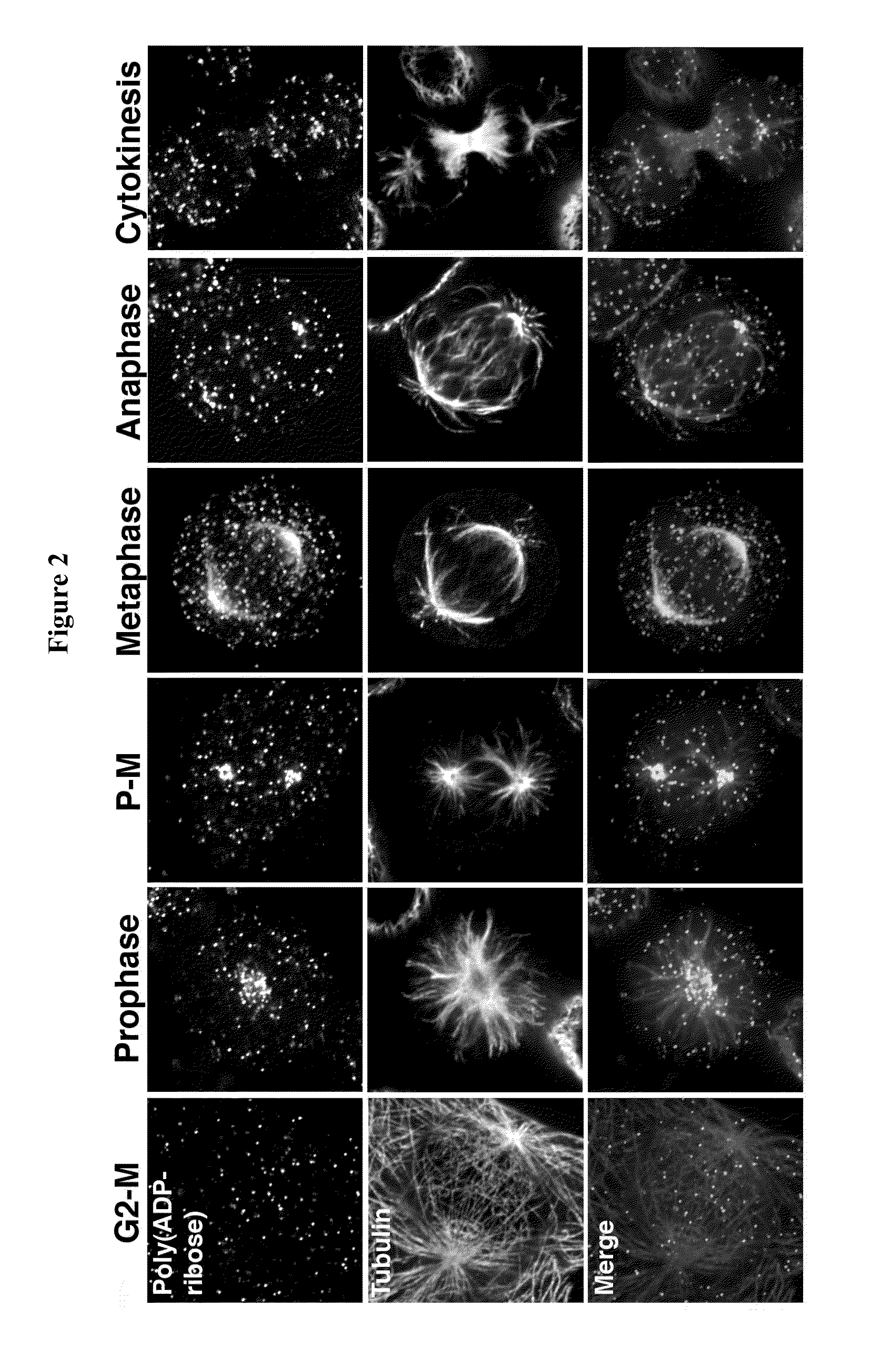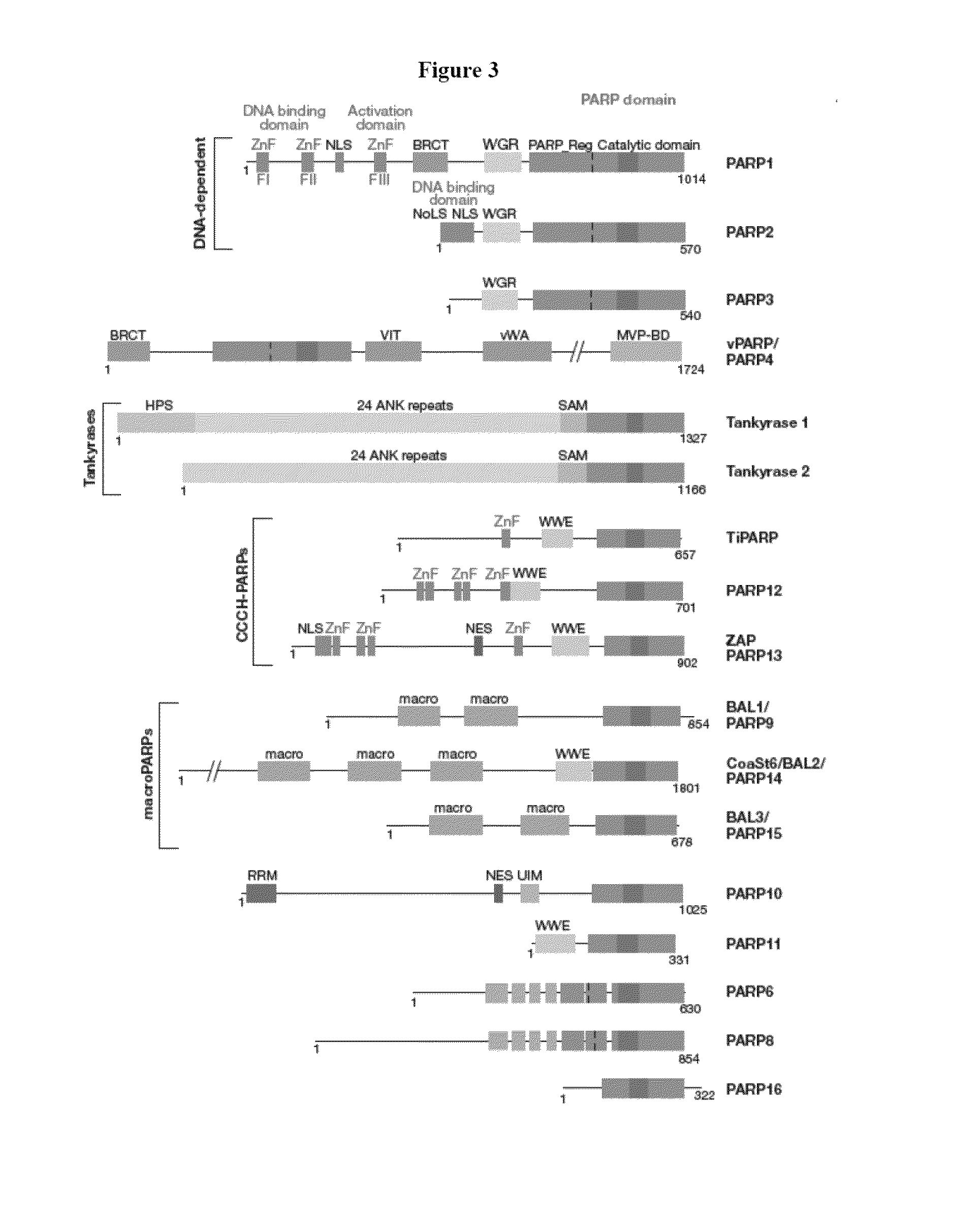Compositions and methods for treating cancer and modulating stress granule formation
a stress granule and cancer technology, applied in the field of molecular biology and molecular medicine, can solve the problems of difficult identification of the function and substrate of each member of the family of proteins, and the specific biological function and protein substrates of these parps are not fully characterized, so as to increase the expression, increase the level, and increase the level
- Summary
- Abstract
- Description
- Claims
- Application Information
AI Technical Summary
Benefits of technology
Problems solved by technology
Method used
Image
Examples
example 1
Generation of PARP-GFP Fusion Proteins and Assays
[0230]Fusion proteins containing the sequence of each PARP and green fluorescent protein (GFP) were generated using the pEGFP-C1 vector (Invitrogen) (FIG. 4). For these experiments, the DNA sequences encoding each of PARP1 (SEQ ID NOS: 1 and 2), PARP3 (SEQ ID NOS: 4, 5, and 6), PARP4 (SEQ ID NO: 7), PARP5A (SEQ ID NOS: 8 and 9), PARP5B (SEQ ID NO: 10), PARP6 (SEQ ID NO: 11), PARP7 (SEQ ID NO: 12), PARP8 (SEQ ID NO: 13), PARP9 (SEQ ID NO: 14), PARP10 (SEQ ID NOS: 15 and 16), PARP11 (SEQ ID NO: 17), PARP12 (SEQ ID NO: 18), PARP13.1 (SEQ ID NO: 19), PARP13.2 (SEQ ID NO: 20), PARP14 (SEQ ID NO: 21), PARP15 (SEQ ID NOS: 22 and 23), and PARP16 (SEQ ID NO: 24) were cloned into the pEGFP-C1 vector using the restriction sites indicated in Table 2. Each resulting plasmid contained a nucleic acid sequence encoding a PARP-GFP fusion protein, wherein the nucleic acid sequence encoding GFP was located 5′ to the nucleic acid sequence encoding the PA...
example 2
Generation of ZZ-TEV-PARP Fusion Proteins
[0239]Fusion proteins containing the sequence of each PARP, a ZZ-domain of SEQ ID NO: 27, and four TEV protease recognition sequences (SEQ ID NO: 26) were cloned using the pcDNA3.1 vector (SEQ ID NO: 33) (Invitrogen) (FIG. 12) to yield a ZZ-4x-TEV-PARP fusion protein for each PARP. For these experiments, the DNA sequences encoding PARP1 (SEQ ID NOS: 1 and 2), PARP2 (SEQ ID NO: 3), PARP3 (SEQ ID NOS: 4, 5, and 6), PARP4 (SEQ ID NO: 7), PARP5A (SEQ ID NOS: 8 and 9), PARP6 (SEQ ID NO: 11), PARP7 (SEQ ID NO: 12), PARP9 (SEQ ID NO: 14), PARP10 (SEQ ID NOS: 15 and 16), PARP11 (SEQ ID NO: 17), PARP13.1 (SEQ ID NO: 19), PARP13.2 (SEQ ID NO: 20), PARP14 (SEQ ID NO: 21), PARP15 (SEQ ID NOS: 22 and 23), and PARP16 (SEQ ID NO: 24) were cloned into the pcDNA3.1 vector using the restriction sites indicated in Table 3. The sequence encoding the ZZ-domain and the sequence encoding the four TEV protease recognition sequences were cloned into the NheI and HinD...
example 3
PARP Activity Assays and Screening Methods
[0242]The above-described PARP fusion proteins may be used in PARP activity assays and in assays to identify an activator or inhibitor for a specific PARP or a specific subset of PARPs. An example of such an activity assay in shown in FIG. 13. In this example, cell lysate is first prepared from a HeLa S3 cell culture expressing one or more PARP-GFP fusion proteins. The cell lysate is then incubated with an anti-GFP polyclonal antibody bound to Dynabead® Protein A beads, and the beads magnetically removed from the cell lysate. The isolated beads bound to one or more PARP-GFP fusion proteins are placed into a multi-well plate and incubated with a labeled NAD+ substrate (e.g., 32P-NAD+). Following incubation with the labeled NAD+ substrate, the magnetic beads bound with the one or more PARP-GFP proteins are magnetically isolated or washed, and the level of the label (i.e., the label present in the labeled NAD+ substrate) that is covalently atta...
PUM
| Property | Measurement | Unit |
|---|---|---|
| stress | aaaaa | aaaaa |
| cellular structures | aaaaa | aaaaa |
| domain structure | aaaaa | aaaaa |
Abstract
Description
Claims
Application Information
 Login to View More
Login to View More - R&D
- Intellectual Property
- Life Sciences
- Materials
- Tech Scout
- Unparalleled Data Quality
- Higher Quality Content
- 60% Fewer Hallucinations
Browse by: Latest US Patents, China's latest patents, Technical Efficacy Thesaurus, Application Domain, Technology Topic, Popular Technical Reports.
© 2025 PatSnap. All rights reserved.Legal|Privacy policy|Modern Slavery Act Transparency Statement|Sitemap|About US| Contact US: help@patsnap.com



